Thingiverse

Laser Fume Scrubber - Fume Coffin Redux by micvee
by Thingiverse
Last crawled date: 4 years ago
VERY IMPORTANT: This is used for reducing or eliminating fumes and some particles from the exhaust of a laser cutter. It is NOT meant to make the air safe to breathe inside a room. You must vent out a window. This is super important. This device does not make the air safe to breathe. period. You should understand that venting inside a room with this device will probably kill you or make you very sick. Is that clear enough?
ALSO VERY IMPORTANT: The blower fan goes after (on the outlet side of) the fume scrubber and pulls air through it. The Venturi effect means that any holes or leaks in the box will just cause clean room air to be pulled into the box. If you were to put the blower fan on the inlet side and push air through the box, any leaks would cause fumes to be pushed out of the box, into the room and then your lungs - this is very bad!!
Sorry, not too much explanation here. This is a choose your own adventure sort of project. I used 1/4 inch plywood and square cut 1x2 (nominal) pine for the frame inside. Check out the Fume Coffin project on Instructables, this is an evolution of that design. Note that the Fusion file has 1/2 inch plywood. If you use 1/4 inch plywood, you will need to adjust the dimensions. The cut lists shows essentially what my dimensions were, but I only used them as a guideline.
Sorry for being vague. You should be able to figure out how to make this if you read the fume coffin Instructable. I just re-oriented the filters so that the HEPA filters from outside to inside, this also allowed me to put the carbon filter inside of the HEPA filter.
You need to 3D print two of the 4 inch bulkhead fittings and one carbon canister adapter, or figure out your own way of getting the vent hoses into and out of the fume scrubber. I used 4 inch dust extractor hoses, made for woodworking.
The inside seams are all sealed with silcone based caulk. The end caps are removable so you can change pre-filters (frequently) and filters (less frequently - as needed). End caps and main HEPA filter are sealed with rubber foam weather seal from the hardware store.
This will remain a work in progress, but I do not intend to add further details or edit the files to be more clear. I hope this helps someone, but I didn't ever intend to share this, so I didn't document well.
ALSO VERY IMPORTANT: The blower fan goes after (on the outlet side of) the fume scrubber and pulls air through it. The Venturi effect means that any holes or leaks in the box will just cause clean room air to be pulled into the box. If you were to put the blower fan on the inlet side and push air through the box, any leaks would cause fumes to be pushed out of the box, into the room and then your lungs - this is very bad!!
Sorry, not too much explanation here. This is a choose your own adventure sort of project. I used 1/4 inch plywood and square cut 1x2 (nominal) pine for the frame inside. Check out the Fume Coffin project on Instructables, this is an evolution of that design. Note that the Fusion file has 1/2 inch plywood. If you use 1/4 inch plywood, you will need to adjust the dimensions. The cut lists shows essentially what my dimensions were, but I only used them as a guideline.
Sorry for being vague. You should be able to figure out how to make this if you read the fume coffin Instructable. I just re-oriented the filters so that the HEPA filters from outside to inside, this also allowed me to put the carbon filter inside of the HEPA filter.
You need to 3D print two of the 4 inch bulkhead fittings and one carbon canister adapter, or figure out your own way of getting the vent hoses into and out of the fume scrubber. I used 4 inch dust extractor hoses, made for woodworking.
The inside seams are all sealed with silcone based caulk. The end caps are removable so you can change pre-filters (frequently) and filters (less frequently - as needed). End caps and main HEPA filter are sealed with rubber foam weather seal from the hardware store.
This will remain a work in progress, but I do not intend to add further details or edit the files to be more clear. I hope this helps someone, but I didn't ever intend to share this, so I didn't document well.
Similar models
thingiverse
free
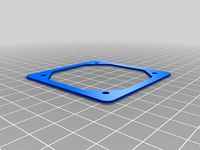
HEPA air filter scrubber tower addons by GMagician
...ter seal fan from dirty air
grate need to be tested to see if air flow is good enough (i have no h/w to change fan pwm and test).
3dwarehouse
free

blower air scrubber for wood shop
...ilter holder. i am a little unsure about the possibility of dust falling out of filter when unit cycles off. jl #wood_shop_blower
thingiverse
free

HEPA/Carbon Filter air scrubber for enclosures by VertexMachine3D
...sons.
happy (and safe) printing!
hepa air filter 6 x 5 inch - http://a.co/d/e1abtib
120mm pc cooling fan - http://a.co/d/4n37k4d
thingiverse
free

Deluxe Coffee Filter Face Mask by cglightNingART
...ide of "part 6" to the front and the open side backwards. (hope you understand, what i mean ;) )
enjoy your face mask
grabcad
free

Portable Hepa Filtration Unit Fume Collector
...ly used in welding applications.
includes poly pre-filter, carbon filter, and hepa filter.
inside is a baldor motor with fan.
thingiverse
free

HEPA Filter ZS203 by Brettarm
...filter zs203 by brettarm
thingiverse
hepa filter zs203 $5 on aliexpress
i'm using it to suck plastic fumes out of my printer
thingiverse
free

40W Laser Cutter Exhaust Adapter by Bartimaeus
...e an in line blower fan, which eliminates positive air pressure in the hose and lowers the chance of fumes leaking into the room.
3dwarehouse
free

3 Stage Filter
...3 stage filter
3dwarehouse
3 stage filter box for fume extraction #activated_carbon #filter #hepa
thingiverse
free

Venturi by crossfactor
... ( support for the air intake is pre made into the design)
remove the circle support by the threads
https://youtu.be/2pyw1a3smve
3dwarehouse
free

HEPA CEILLING
...hepa ceilling
3dwarehouse
place where hepa filter inside the room
Micvee
thingiverse
free

Makita RT0701C Perpendicularity Tester by micvee
...lted's dw 660 perpendicularity tester so that it will fit onto the 22mm collet nut of the makita rt0701c. works like a charm.
thingiverse
free

TAZ 6 Enclosure Panel Mods by micvee
...choose to install a top mounted filament spool holder.
i have not cut these parts out yet, but i will upload pictures when i do.
thingiverse
free

TBS Source One Immortal T Mount by micvee
...3 (v4 rear hole spacing is same as front spacing - you'll have to test to see if it fits since i don't own a v4 to test).
thingiverse
free

HyperCube LM8UU Bearing Clamp by micvee
...practically zero play in the x carriage. i will post pictures once i receive the rest of my parts and have assembled the machine.
thingiverse
free
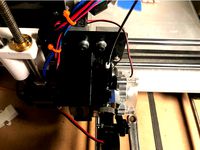
E3D Titan Aero Mount For Alunar M508 by micvee
...of the thing describes. it's not ideal but it gets the job done. the titan aero kit came with the longer screw that i needed.
thingiverse
free

HyperCube Double Bushing Holder With Parametric Hole by micvee
...isfied
i have also uploaded stp and obj files of the same model, in case you don't have access to fusion 360 for some reason.
thingiverse
free

MPCNC Universal Mount for Roland Style Drag Knife by micvee
...e someone wants to modify the design.
1/18/2017 - i unmarked this thing as a work in progress. it prints great and is functional.
thingiverse
free

ZOHD Dart 250g ESC Cover With BN-880 and CaddX Vista Mounts by micvee
...0.2mm layer height because the main cover is only 0.6mm thick. this stl should be printed flat on the build plate, with supports.
Redux
sketchfab
$50

Undertow Redux
...undertow redux
sketchfab
an update of undertow for 3d printing purposes - undertow redux - buy royalty free 3d model by ametzger
thingiverse
free

Man Spider redux redux by cerberus333
...now part of the upper body
also remodeled legs to hopefully print without
issues.
modeled in sculptris
flatbottomed in truespace5
thingiverse
free

Rubberband Gun Wheel Redux by mceisel
...rubberband gun wheel redux by mceisel
thingiverse
redux to avoid rubberband binding
thingiverse
free

Rombo Reduxe Deluxe ROMboard case
...rombo reduxe deluxe romboard case
thingiverse
this is a case for the rombo redux deluxe romboard.
sketchfab
$9
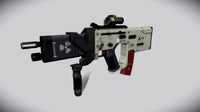
Scifi-Rifle Redux
...nal files contain 4k textures and a version with unequiped attachments - scifi-rifle redux - buy royalty free 3d model by revox79
unity_asset_store
$5

BA Sword Collection Redux
...rkflow with ba sword collection redux asset from crisismode. find this & other great 3d options on the unity asset store.
thingiverse
free

Bauble Sculpture ReDux by tomburtonwood
...bauble sculpture redux by tomburtonwood
thingiverse
multiscanned with the makerbot digitizer desktop 3d scanner
thingiverse
free

Key-Holder Redux by Stanistani
...key-holder redux by stanistani
thingiverse
revisiting the key-card, car-keys, and a bit of change holder.
thingiverse
free

Bowtie redux by PrestonBuffalo
...estonbuffalo
thingiverse
the other bowties i made were a real bitch to get printed....so ive redone them to be flat on the back.
thingiverse
free

General Strunn- redux by DavikDesigns
...general strunn- redux by davikdesigns
thingiverse
hes back! this time properly scaled! (28 heroic)
please enjoy
Scrubber
3d_export
$29
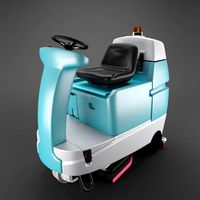
ride on scrubber dryer
...t will enhance the detail and realism of any of your rendering projects.<br>available 3d file format: max2013, fbx, obj,3ds
3d_sky
free

Scrubber
...scrubber
3dsky
useful helper in kitchens
thingiverse
free

Scrubber Funnel by Ravenmouth
...ht as the filling line (at least on my scrubbers please do an individual test whether your scrubber was filled correctly or not).
thingiverse
free
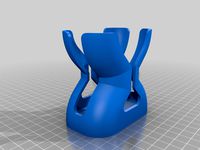
Tawashi Scrubber Holder
...ber holder
thingiverse
a holder for the kamenoko tawashi scrub brush.
https://www.bonappetit.com/story/kamenoko-tawashi-scrubber
thingiverse
free

Solder Scrubber Pot by Rhackleford
...t even more anti spill.
i intend to use it for holding pot scrubbers to use as a solder scrubber.
i scaled down to fit a scrubber
thingiverse
free

Scrubber Dryer by dionnel
...s little holder will allow your dish-washing scrubber to dry until it is needed again. fits nicely between the sink and the wall.
thingiverse
free

Funnel for CCR Liberty scrubber by _iw0gz_
...funnel for ccr liberty scrubber by _iw0gz_
thingiverse
funnel for ccr liberty scrubber
thingiverse
free
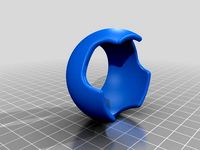
Metal Scrubber Grip by jlanger
...rubbers for skillets art the best! but they get gross after a while, this is a gripper that fits a lot of different kinds! enjoy!
thingiverse
free

Fume Scrubber by unitconversion
...ended to go inside of a heated build environment and keep the interior fume levels down without wasting heat by blowing them out.
thingiverse
free

Scrubber sponge rack holder by kevinaware
...rack holder by kevinaware
thingiverse
sponge and scrubber dual holder for a double sink. works great. prints well with supports.
Coffin
3d_export
$8

coffin
...coffin
3dexport
coffin new version, textures 4k
3d_export
$8

coffin
...coffin
3dexport
coffin old versions, textures 4k
turbosquid
$1

Coffin, Halloween undead boiling coffin
...n, halloween undead boiling coffin for download as ma and fbx on turbosquid: 3d models for games, architecture, videos. (1555424)
turbosquid
$1

Coffin
...royalty free 3d model coffin for download as ma, fbx, and obj on turbosquid: 3d models for games, architecture, videos. (1556582)
turbosquid
$32

Coffins
... available on turbo squid, the world's leading provider of digital 3d models for visualization, films, television, and games.
turbosquid
$6

Coffin
... available on turbo squid, the world's leading provider of digital 3d models for visualization, films, television, and games.
turbosquid
$2

Coffin
... available on turbo squid, the world's leading provider of digital 3d models for visualization, films, television, and games.
turbosquid
free

Coffin
... available on turbo squid, the world's leading provider of digital 3d models for visualization, films, television, and games.
turbosquid
free

Coffin
... available on turbo squid, the world's leading provider of digital 3d models for visualization, films, television, and games.
3d_export
free

antique coffin
...antique coffin
3dexport
Fume
turbosquid
$5
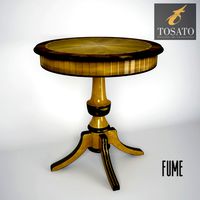
Tosato Fume
... available on turbo squid, the world's leading provider of digital 3d models for visualization, films, television, and games.
turbosquid
$4
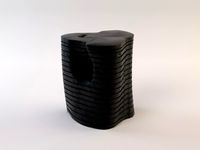
Garis Stool Fume
... available on turbo squid, the world's leading provider of digital 3d models for visualization, films, television, and games.
turbosquid
$10

Chandelier IDL 359-4S FUME
... available on turbo squid, the world's leading provider of digital 3d models for visualization, films, television, and games.
turbosquid
$3

Door Handle Interior, Fumed Brass
...rior, fumed brass for download as max, max, 3ds, fbx, and obj on turbosquid: 3d models for games, architecture, videos. (1539559)
3ddd
$1
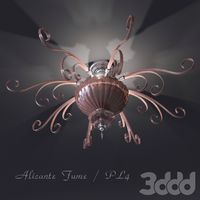
Люстра Alicante Fume / PL4 - Euroluce Lampadari
...ик из хромированного металла и дымчатого хрустального стекла. модель рассчитана на четыре галогенные лампы макс. мощностью 40 вт.
archive3d
free
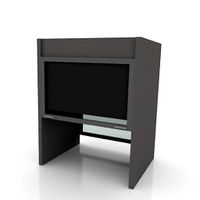
Hood 3D Model
...hood 3d model archive3d fume hood laboratory equipment laboratory fume hood - 3d model...
3d_export
$10
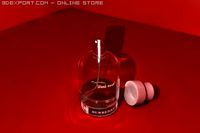
Burberry Cologne 3D Model
...3dexport perfume cologne burberry fragrance scent bottle spray fume fume burberry cologne 3d model riteoff 7042...
3d_export
$39

Matches 3D Model
...3dexport matches fire smoking cigar cigarette hearth oven stove fume phoenix photoreal vray obj fbx matches 3d model sbgwolf...
3d_export
$5

Fire puff 002 3D Model
...3dexport fire puff explosion flame spark hot heat render fume gas smoke fire puff 002 3d model dreamkasztni 52818...
3ddd
$1

ALABASTRI DI REX DECORO PUZZLE
...фирмы rex, коллекция alabastri 1) ambra 2) bamboo 3) fume 4) madreperla 5) miel 6) smeraldo 7)...
Laser
3d_export
$5
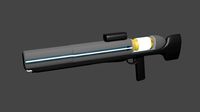
laser
...laser
3dexport
a 3d laser
3d_export
free

cnc 3dp laser nozzle for 2w laser opt lasers
...logy that gave birth to cutting and engraving laser heads this laser nozzle was designed for, read the article in the link below:
3d_export
free

cnc laser mount opt lasers
...eive the engraving and cutting laser heads this cnc machine laser mount was designed for, read the article on the following page:
turbosquid
$20

Laser
... available on turbo squid, the world's leading provider of digital 3d models for visualization, films, television, and games.
turbosquid
$15
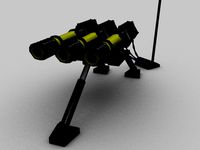
Laser
... available on turbo squid, the world's leading provider of digital 3d models for visualization, films, television, and games.
turbosquid
$3
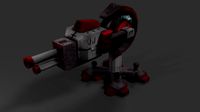
Laser
... available on turbo squid, the world's leading provider of digital 3d models for visualization, films, television, and games.
3d_export
$5

laser sword
...laser sword
3dexport
it is a blue laser sword with a metal frame
3d_ocean
$19

Laser Turret
...be used in any sf type of game, especially in tower defense games. - laser turret: 3025 polygons - props: 270 polygons - textu...
3d_export
free
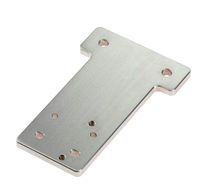
workbee cnc laser mount for opt lasers
...the specifications of engraving and cutting laser heads this mount was designed for, please take a look at the following website:
3d_export
free

shapeoko cnc laser mount for opt lasers
...ind out the opportunities that adding a cutting and engraving laser head to your cnc can bring, take a look at the website below:
